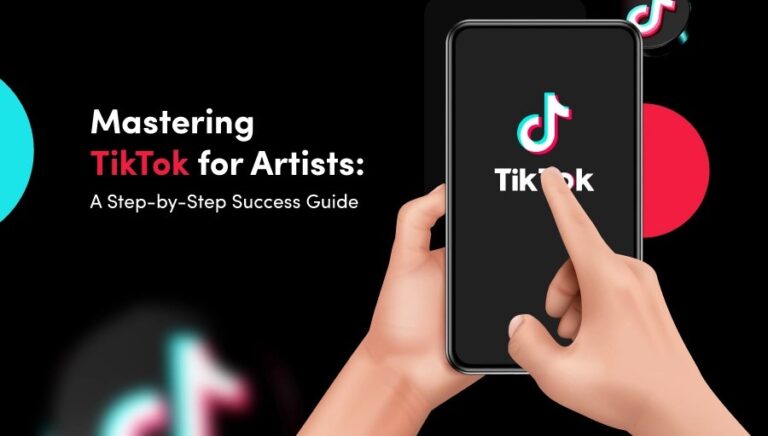TikTok has emerged as a dominant force in the world of digital marketing. With its explosive growth and highly engaged user base, it has become a powerful tool for brands looking to connect with younger, trend-savvy audiences. TikTok marketing involves using the platform to promote products, services, or brand awareness through creative short-form videos.
It taps into viral trends, music, and culture, allowing businesses to tell stories in an entertaining, authentic way. Unlike traditional advertising, TikTok’s ecosystem encourages participation, interaction, and relatability—qualities that make marketing campaigns feel more human and less promotional.
ASLO READ: TikTok and Luminate Unveil New Insights in Latest Music Impact Report
What is TikTok Marketing?
TikTok marketing is the practice of leveraging TikTok’s video-sharing platform to achieve marketing goals, such as increasing brand visibility, driving traffic, or boosting sales. It involves creating original content, collaborating with influencers, running paid ads, and engaging with the community.
What makes TikTok stand out is its algorithm-driven “For You” page, which can propel unknown creators and brands into virality with a single video. This organic reach presents a unique opportunity for marketers to grow without massive budgets. The casual and creative nature of TikTok makes it ideal for brands that want to build trust and authenticity with their audiences.
A Step-by-Step Guide to Getting Started
To begin marketing on TikTok, a brand first needs to establish a presence on the platform. This starts with setting up a TikTok Business Account, which provides access to analytics and advertising features. Once the account is ready, the next step involves identifying the target audience and the type of content that will resonate with them. Understanding TikTok trends, hashtags, and popular sounds is crucial, as these elements often influence what becomes visible on the platform.
Creating a compelling profile with a clear bio, consistent branding, and a link to a landing page is also essential for building credibility. Brands should begin posting content consistently while observing how their videos perform and evolve based on engagement and feedback.
How to Create a TikTok Marketing Strategy
A successful TikTok marketing strategy begins with defining clear objectives. Whether the goal is to raise awareness, drive traffic, or convert viewers into customers, having a specific aim guides the type of content being created. Content should reflect the brand’s personality and align with topics or themes that the target audience cares about. It’s important to use relevant hashtags, participate in trends where appropriate, and craft content that feels native to the platform.
Engagement is another key aspect of a strong strategy. Responding to comments, collaborating with other creators, and staying active in the community helps build stronger relationships with followers. As the strategy unfolds, analyzing metrics such as video views, likes, shares, and follower growth can inform future decisions and help refine the approach over time.
Inspiring TikTok Marketing Examples
Several brands have already demonstrated how powerful TikTok marketing can be. For example, Chipotle leveraged the platform by launching a dance challenge that quickly went viral and significantly boosted their digital sales. Their campaign tapped into the fun and interactive nature of TikTok, encouraging user participation while promoting their product.
Another example is Ryanair, which embraced humor and meme culture to connect with younger audiences in an unconventional but effective way. Instead of pushing traditional advertisements, they posted self-aware, relatable content that resonated with TikTok users. Similarly, Gymshark built its presence by collaborating with fitness influencers who showcased workout routines featuring the brand’s apparel. These examples show that authenticity, creativity, and a deep understanding of TikTok’s culture are critical to successful campaigns.
TikTok Marketing Tools for 2024
To make the most of TikTok marketing, brands often turn to tools that enhance content creation and performance tracking. TikTok’s own Ads Manager platform allows marketers to run targeted campaigns and monitor results in real time. It offers powerful features such as audience targeting, ad placement control, and budget management. For video editing, many creators use CapCut, an intuitive tool that simplifies the process of adding effects, transitions, and music.
It allows brands to maintain high production value without needing advanced editing skills. Another valuable resource is TrendTok Analytics, which helps identify emerging trends, optimal posting times, and performance insights. These tools can streamline the content creation process, uncover valuable data, and improve overall marketing effectiveness.
Frequently Asked Questions
What makes TikTok different from other social media platforms for marketing?
TikTok’s algorithm prioritizes content over followers, allowing even small accounts to go viral. Its short-form video format, creative tools, and trend-driven culture offer a unique environment for authentic, high-impact marketing.
Can small businesses benefit from TikTok marketing?
Yes, small businesses can thrive on TikTok by creating relatable, behind-the-scenes, or product-focused content. Many small brands have gone viral and grown significantly by consistently posting engaging videos that connect with niche audiences.
Do I need a large budget to market on TikTok?
Not necessarily. While paid ads are available, organic content can perform exceptionally well without any budget. Consistency, creativity, and trend participation are more important than spending large amounts on promotion.
How often should I post on TikTok for marketing?
Posting at least three to five times a week helps maintain visibility and increase engagement. However, quality and relevance are more important than frequency alone. It’s crucial to stay consistent while delivering content your audience cares about.
Is TikTok marketing effective for B2B brands?
While TikTok is often associated with B2C content, B2B brands can also succeed by humanizing their messaging, sharing expertise in creative ways, and using storytelling to make their products or services relatable and engaging.
Conclusion
TikTok has redefined what effective digital marketing looks like in the age of short attention spans and content overload. Its culture thrives on creativity, spontaneity, and authenticity—traits that modern consumers value more than polished, traditional advertising. Whether you’re launching a product, building brand awareness, or simply trying to engage with a younger audience, TikTok offers an open playing field with viral potential for any business willing to adapt and experiment.

